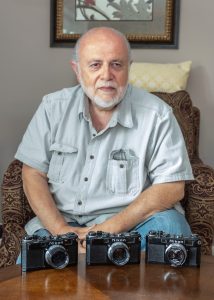
I am happy to present to you what I hope will be a continuing series of collaborative posts with life-long photographer and Nikon historian Robert Rotoloni.
Robert is an American photographer and graduate of Drake University in Des Moines, Iowa. He was attracted to photography at a young age, buying his first 35mm camera, a Taron PR rangefinder at the age of 13 which he took on a school trip to Washington DC.
In college, he got his first Nikon F camera and shot for the school yearbook. In a chance encounter at one of the school’s basketball games, his professionalism and technique attracted the attention of a visiting UPI photographer named Denny Cook who asked who he worked for. Upon revealing that he was a student photographer, Cook asked if he would ever want to help him on some projects.
Over the course of the next few years, armed with his UPI press pass, Robert would photograph people like Robert Kennedy, Jesse Owens, and Dr. Spock, building up his experience and credentials. Throughout the 1970s, Robert’s library of Nikon SLRs, rangefinders, lenses, and other accessories would grow. His fascination and knowledge of Nikon increased, eventually forming the Nikon Historical Society in 1983, and in 1988 would begin biennial NHS Conventions in places as diverse as Utrecht, Paris, and Vancouver.
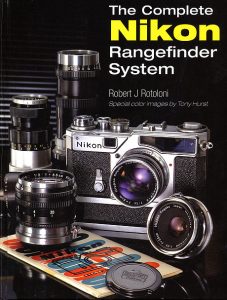
Robert would author three authoritative books about the Nikon rangefinder system, the first two in 1981 and 1983, and and then in 2007 came “The Complete Nikon Rangefinder System”, a 528 page bible consisting of thousands of photos of everything relating to the entire history of the Nikon rangefinder. This book is not only the most comprehensive book ever made on the Nikon rangefinder, it could possibly be the most complete book written about any camera system ever.
Today, Robert is retired from his primary profession in the pharmacy industry. He is still President of the Nikon Historical Society, and authors quarterly magazines offering new and updated information regarding the entire Nikon lineup, including both rangefinders and SLRs.
On February 5th, 2018, Robert appeared on the 18th episode of the 15th season of the popular reality show “Pawn Stars” selling a black Nikon S2 rangefinder from his personal collection. Recently, I spoke with Robert and asked how he got to appear on the show. Here is a summary of our conversation.
Mike: I think the question on most everyone’s minds is, how did you get on the show?
Robert: Yeah, I get asked that a lot. It turns out, they contacted me! In July 2017, I received an email from a lady named Kathleen Scott, who worked for a production company for the show. She said they found my name in a list of antique collectors and experts for various products. She knew I had authored books and was an expert on Nikons, so she asked if I was interested as they don’t get a lot of cameras on the show.
I told her I was interested and she told me that the first step was for me to pick out 1 or 2 items that are special or unusual to be considered for the show. I needed to send them several pictures of the item and write a cover letter explaining a little bit about the item and why it is special. I also needed to tell them what my asking price would be and what the minimum amount I would consider for it.
Mike: What made you pick the particular Nikon you selected?
Robert: I had 10 of these in my collection and thought it had the right balance of desirability and history, while being something I didn’t mind parting with.
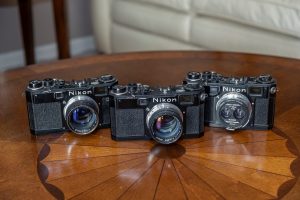
Mike: Compared to the others in your collection, how did this one compare to the ones you kept?
Robert: From a collector’s standpoint, the camera was in good shape and was fully functional, but compared to others in my collection, it was far from mint but was also not the worst one I had either. There was a small dent on the rear of the camera that had been painted over in the past. They actually mention this in the episode.
Mike: So after you sent them the photos and a cover letter, did she tell you that you’d be on the show?
Robert: There is some type of committee that reviews submissions like these and they decide which ones are selected to be on the show. About a week after sending them what they asked, I got another email saying that my camera was selected to be on the show. They told me that shooting would start August 21st and would go through early November. My episode would be filmed the morning of Friday, October 27th. They shoot the show 5 days a week, Monday through Friday from about 8am to 5pm.
Mike: Did they pay for all of your travel and expenses to get there?
Robert: No, I had to pay for my own flight to Las Vegas, hotel room, and all of my meals. There is no “appearance fee” for being on the show. In total, it cost me around $1000 out of my pocket to appear on the show.
Mike: Wow, so there’s a pretty big investment for people who want to be on the show!
Robert: I think for most people, the experience of being on the show is part of the reward. Another factor in my selection for this particular Nikon was how much I originally paid for it when I first added it to my collection, plus all of my expenses, I still thought I could make a profit from it.
Mike: In the episode you appeared in, you only deal with Chumlee, did you get to meet anyone else?
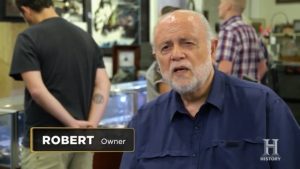
Robert: Unfortunately no. I was told when I arrived that the Harrisons had some other kind of engagement and would not be there that day, so I never got to meet them.
Mike: What was the day of shooting like?
Robert: I was told to get there between 8:15 and 8:30 and when I arrived, the store was closed for business and there was a line of about 30 or so people waiting outside. I was told to knock on the door and tell them who I was and they would let me in. Before I was let in, I talked to the first guy in line who I noticed was wearing a London t-shirt and had an English accent. He had said he was visiting Las Vegas and was hoping to be selected to appear on the show.
It turns out that every day they shoot an episode, the show will select 20 or so people and use them as background extras during filming. The store is closed during the entire time they are talking to a seller. These people are told to not make eye contact with the camera or make too much noise. In fact, one time during the filming of my segment, two of the extras were told they were talking too loud and needed to be quiet. The extras are not paid to appear on the show but do it for the thrill of saying they might get on TV.
Mike: So nothing of what you see during the show has real customers?
Robert: For “filler” scenes where you see random people walking around, they do use footage when the store is open, but any time you see something being sold, that footage is done with pre-selected extras while the store is closed to the public.
Mike: What happened after you went in?
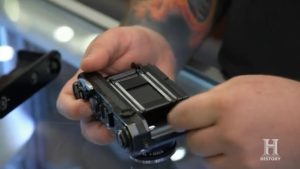
Robert: I was taken to the back to meet with the production crew. There were about 8 people from camera guys, lighting, sound, and a few other people. During this time, they went over how filming would go. They coached me on things to say like rather than say “I am here to sell my camera”, I was to say “I am here to sell my Nikon camera”. The entire staff was very friendly and accommodating to me.
They also shot some promotional shots of the camera sitting on the counter to edit into the show during still scenes like before or after a commercial.
During my segment, I was only going to deal with Chumlee and there would be no “expert” called in like they do often on the show. Normally one of the Harrisons or an expert would give some kind of back story to an item, but since it was just me and Chumlee, I was asked to go over some facts like that there were only about 430 of these black Nikon S2s ever made and that they were made specifically for professional photographers, etc.
Mike: Did you have to show them how the camera worked?
Robert: Yes, one of the cameramen was a photographer and was excited to see the camera and asked me some questions about it which was kind of neat, but I needed to show them how the back opened, how the lens comes off, and a quick lesson on the camera’s controls.
Mike: Were there any other sellers in the store at this time?
Robert: No, when they film, they only shoot one segment at a time. Mine was the morning of October 27th. The other sales for the remote control Disney boat and German medal of honor that appeared in the same episode were likely shot on completely different days.
Mike: How long was all of this behind the scenes prep work?
Robert: I got in there around 8:30am and this lasted until about 10:15am. After getting everything ready, I got to meet Chumlee and we went over one last run through of what we would talk about.
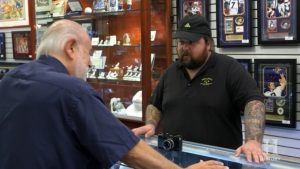
Mike: What is Chumlee like in person? Would you say his persona is similar in real life to how he is portrayed on the show?
Robert: Since neither Rick, Corey, or the old man were there, he didn’t joke around much like you often see on screen. He was very friendly to me and professional. He read over my notes about the camera and prepared with knowledge in advance of filming so he would appear knowledgeable on screen.
Mike: Wow, so they get to read up on an item and prepare before the cameras start rolling?
Robert: Yeah, I think that’s pretty common. I watch the show at home and there’s simply no way anyone working in a pawn shop could know that much history about all of the things they get, without some preparation in advance. Of course this is a television show too, so they want to look good too.
Mike: How long did the actual filming take?
Robert: I was only on camera for 15, maybe 20 minutes total. We did a couple of takes as both Chumlee and I flubbed our lines and we had to start over, but overall, I wasn’t in front of the camera for very long.
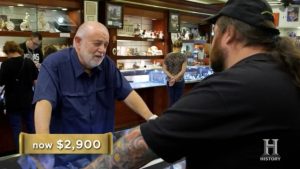
Mike: You said earlier that when you submitted your cover letter, you were asked to provide an asking price and a minimum amount that you’d accept. During the episode, Chumlee’s first offer is $2900. Is this done on purpose to build drama so you can negotiate to a predetermined price?
Robert: Yes and no. While I’m sure they purposely start low because it looks good on TV, there was never a predetermined price.
Mike: Really? You mean you weren’t told what the camera would sell for before filming?
Robert: No. In the contract that I was given before appearing, it explicitly says that there is no guarantee that they would buy my item.
Mike: So, as you are filming, the negotiating is real?
Robert: Yes. Although there is a lot of prep work into making the show, they get some background info on the product and know how much you want for it, and they get to rehearse with you what’s going to happen, you do not know until the actual negotiation if you are going to make a deal.
Mike: Wow, I did not know that! So what were you thinking when Chumlee threw out his first offer of $2900?
Robert: My reaction was genuine, I would have never taken that much for it, especially considering what I had already paid out of my pocket to be on the show.
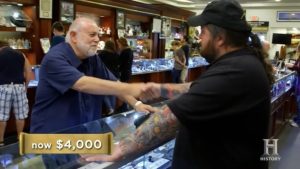
Mike: The final sale price of $4000 was still below your original minimum price of $4500, why did you accept it?
Robert: Selling it for $4000 still made me a nice profit, even after factoring in all of my expenses. It wasn’t as much as I had hoped, but had I walked away from that price, I would have gotten nothing, and the whole trip would have been a net loss for me.
Mike: Do you think that dealing with Chumlee as opposed to one of the Harrisons benefited you or hurt you?
Robert: I think it benefited me. I’ve seen enough episodes and I think that Rick is a tough negotiator, Chumlee was pretty easy going throughout the process. Of course there’s no way to know for sure, but I think it worked in my favor based on what I’ve seen from other episodes.
Mike: You said in your closing interview that you were happy with the $4000 price, and that you would probably use the money to buy another Nikon, have you?
Robert: I’ve recently picked up a few odds and ends, but the highlight was a rare Nikkor 35mm f/3.5 lens made specifically for the Nikon I. The serial number on the lens means it was the 44th ever produced.
Mike: So when it was all done, did they cut you a check?
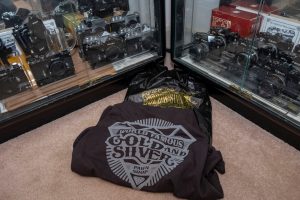
Robert: Nope, I got paid in $100 bills. Even though it is a TV Show, this is a real pawn shop and they only deal with cash! They also gave me a free T-shirt that I got to take home as a souvenir.
Mike: You said you filmed this on October 27th, but the episode did not air until February 5th. Were you told the exact date it would air?
Robert: No, the show said they didn’t know exactly which episode it would air on. I had a bunch of friends and family that had been bugging me about when it would air, but I didn’t find out for sure until about a week before the episode aired, when a fellow collector saw it mentioned in their website and told me.
I don’t even have cable at home so I couldn’t watch it the night it aired. I had to ask someone else I know to record it and burn me a copy!
(editor: That person was me!)
Mike: So after everything was over with, are you happy that you went on the show?
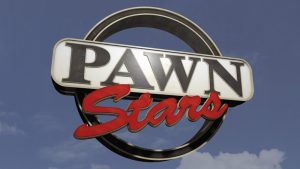 Robert: Absolutely. It was a really cool experience and it got me out of the house for a couple of days. I do wish my segment was a little longer and a little more of the historical stuff I shared had made it into the final cut, but that’s OK. It’s a neat thing that not many people can say they’ve done.
Robert: Absolutely. It was a really cool experience and it got me out of the house for a couple of days. I do wish my segment was a little longer and a little more of the historical stuff I shared had made it into the final cut, but that’s OK. It’s a neat thing that not many people can say they’ve done.
If you would like to watch Robert’s episode of Pawn Stars, it is the 18th episode of the 15th season and is called “The Happiest Place to Pawn”. You can stream it online from the History Channel’s official website if you subscribe to one of many participating cable companies.
https://www.history.com/shows/pawn-stars/season-15/episode-18
You can also purchase the episode through Amazon at the following link. Amazon incorrectly lists the episode as Season 21, Episode 6.
https://www.amazon.com/gp/video/detail/B0797D8F45
As of 5/23/2018, Robert’s black Nikon is still for sale at the Gold and Silver Pawn Shop’s official website for $7500. If you are interested in viewing or purchasing it yourself, you can see it here:
https://gspawn.com/vintage-nikon-nippon-kogaku-s2-35mm-camera/

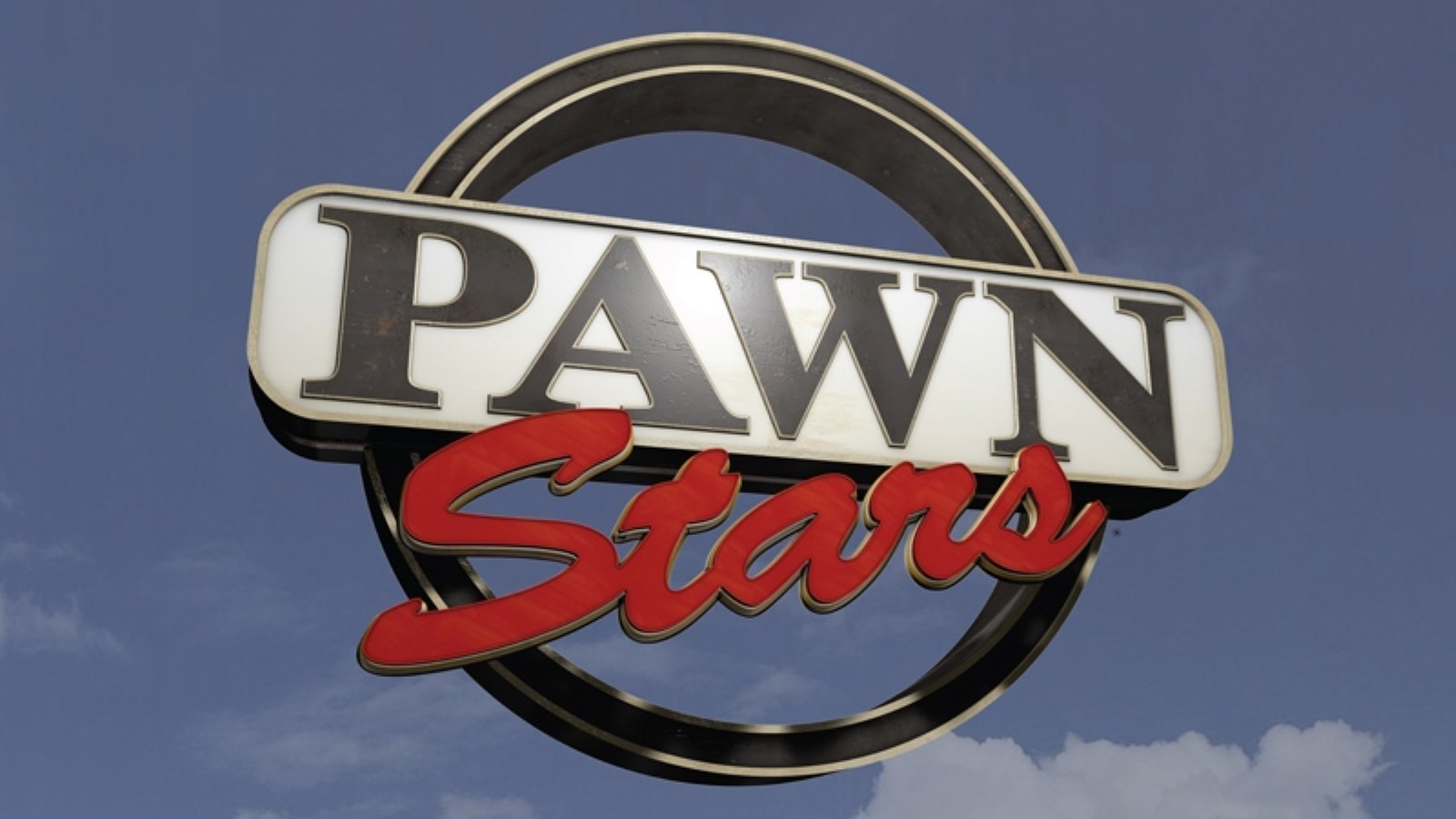
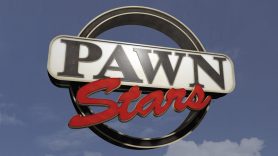
nice going robert
I’,ve known Bob for 40+ years. Great capture.. Looking forward to reading the chapter.
Good Bargaining Robert.
Got Chumlee good lol